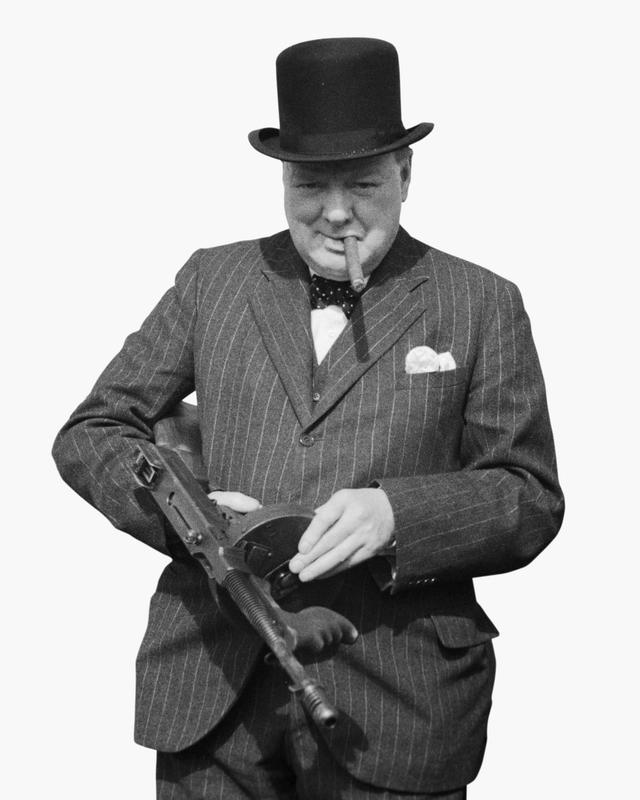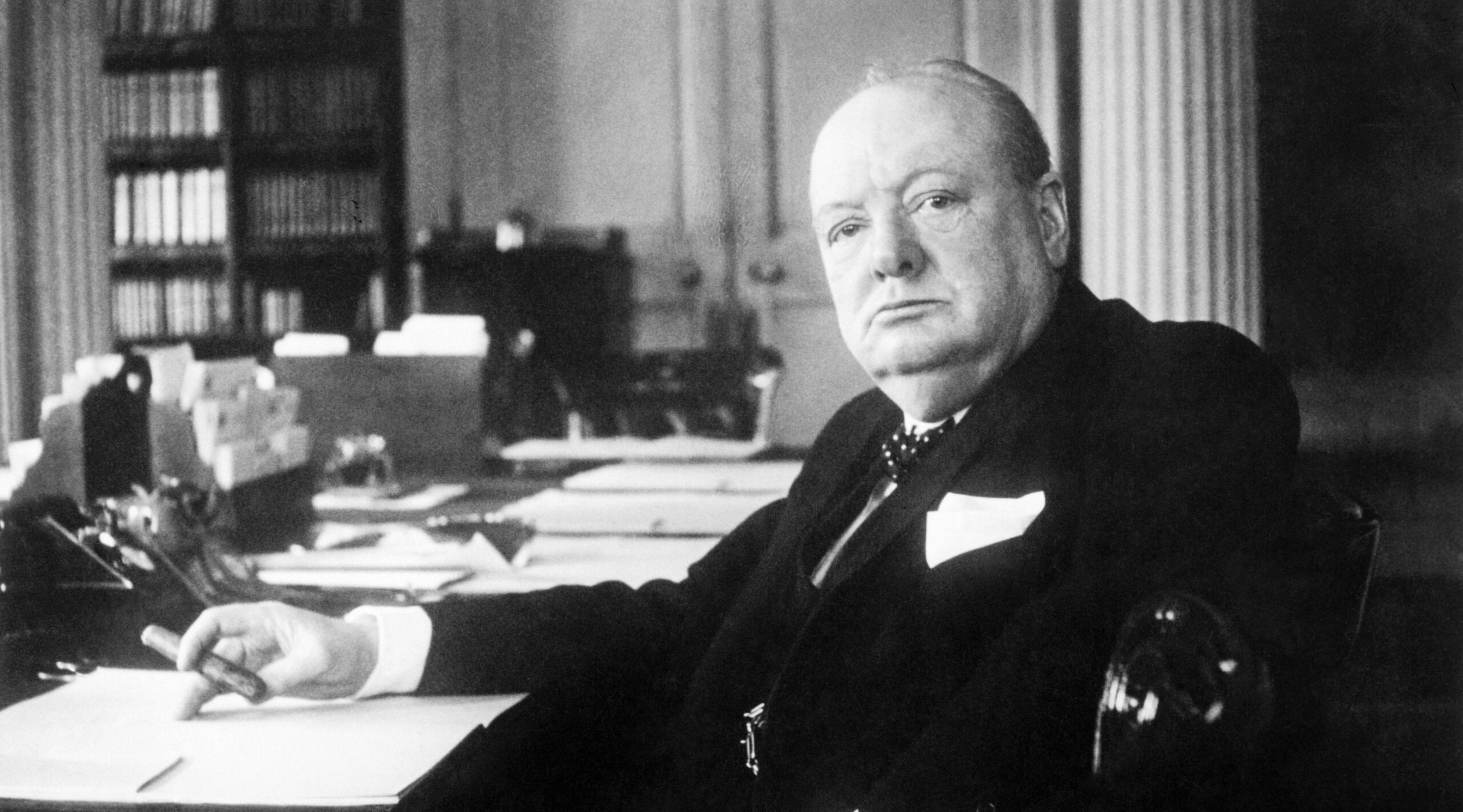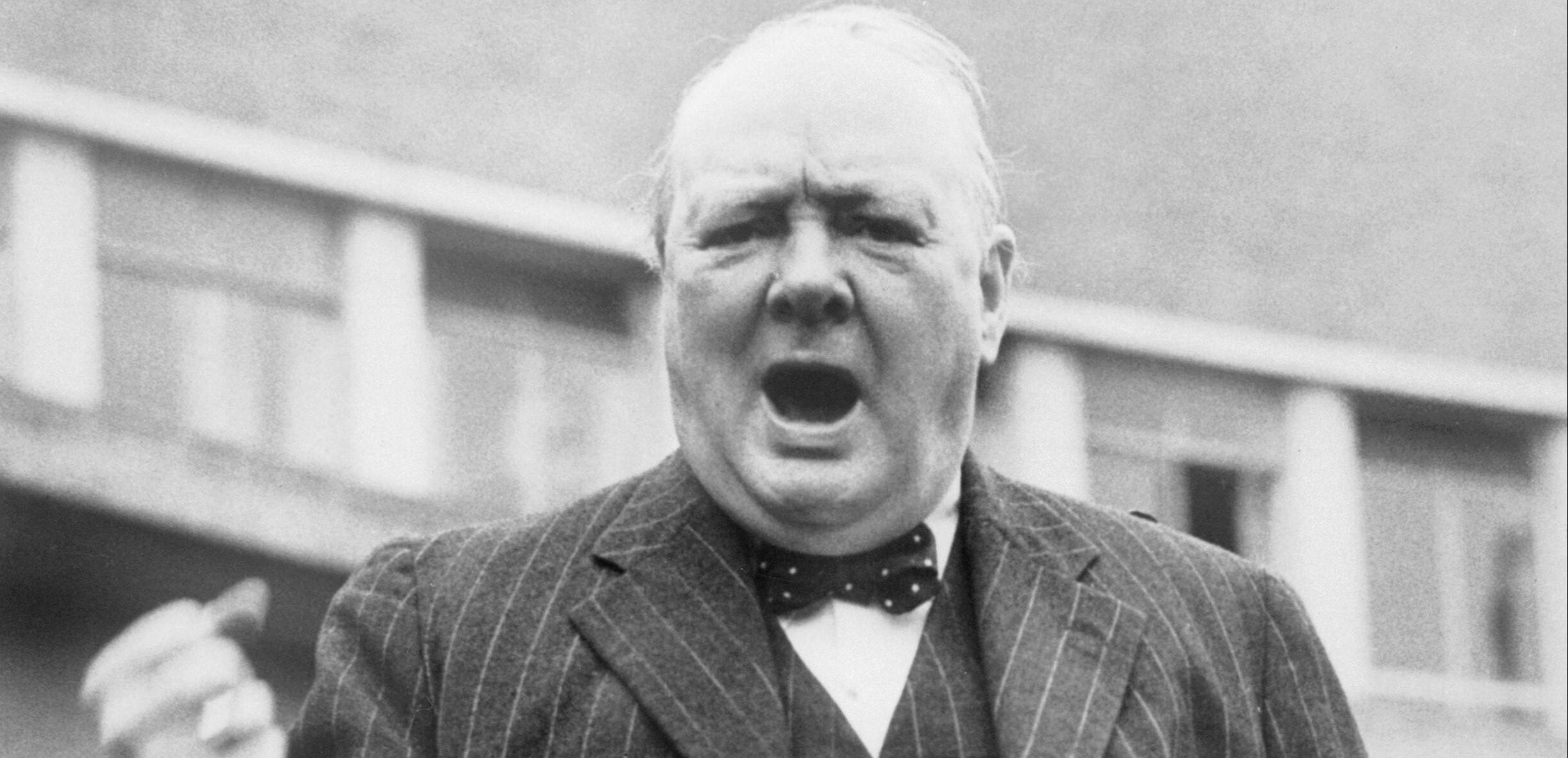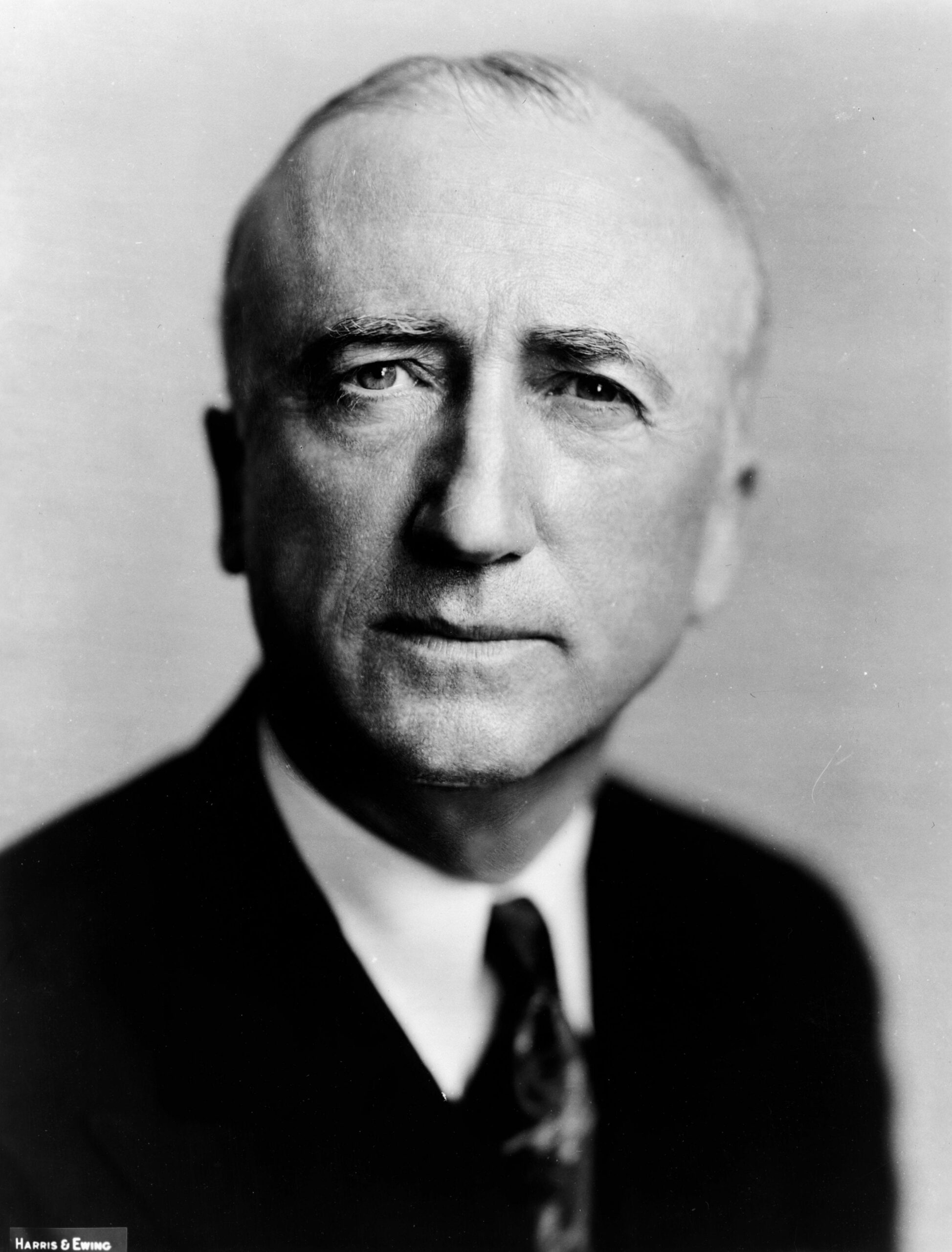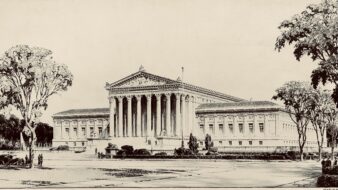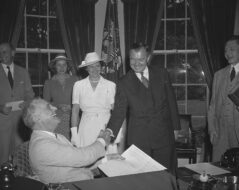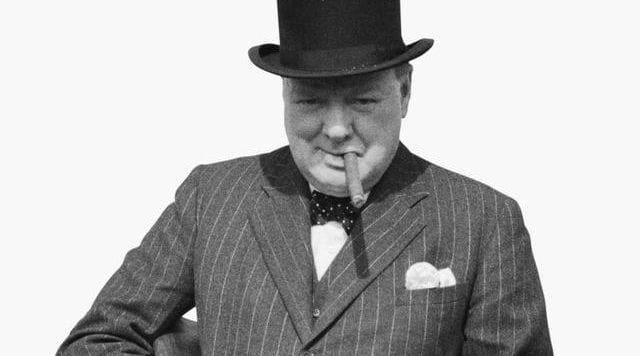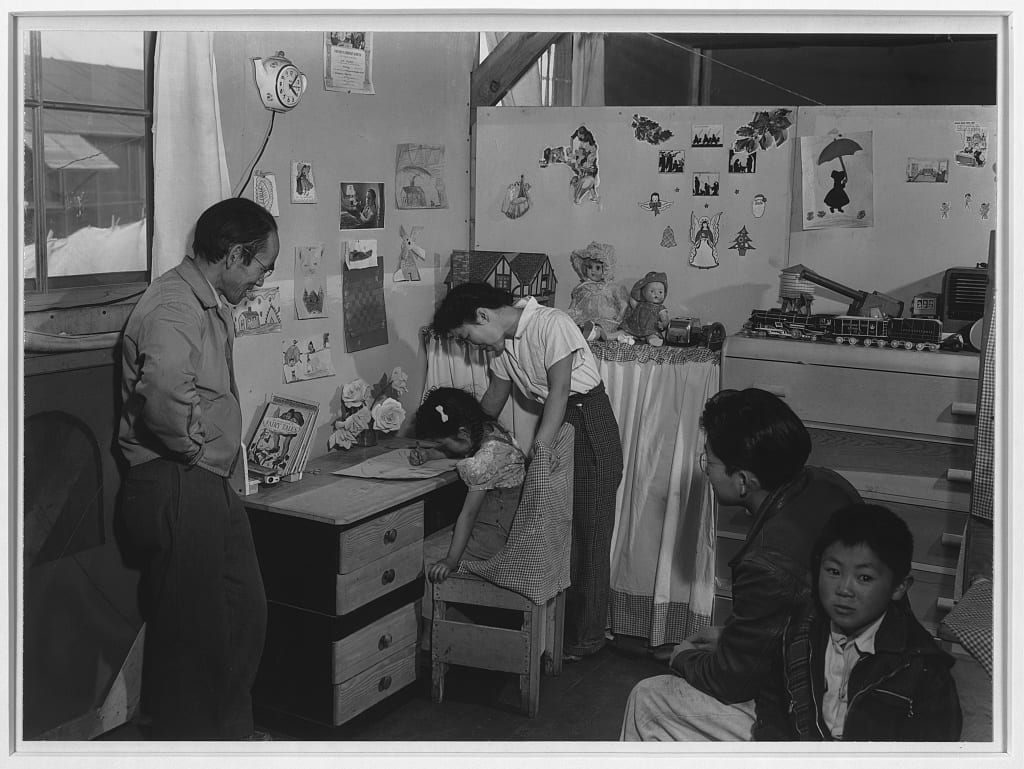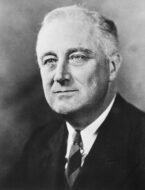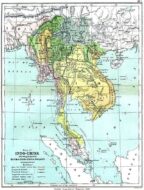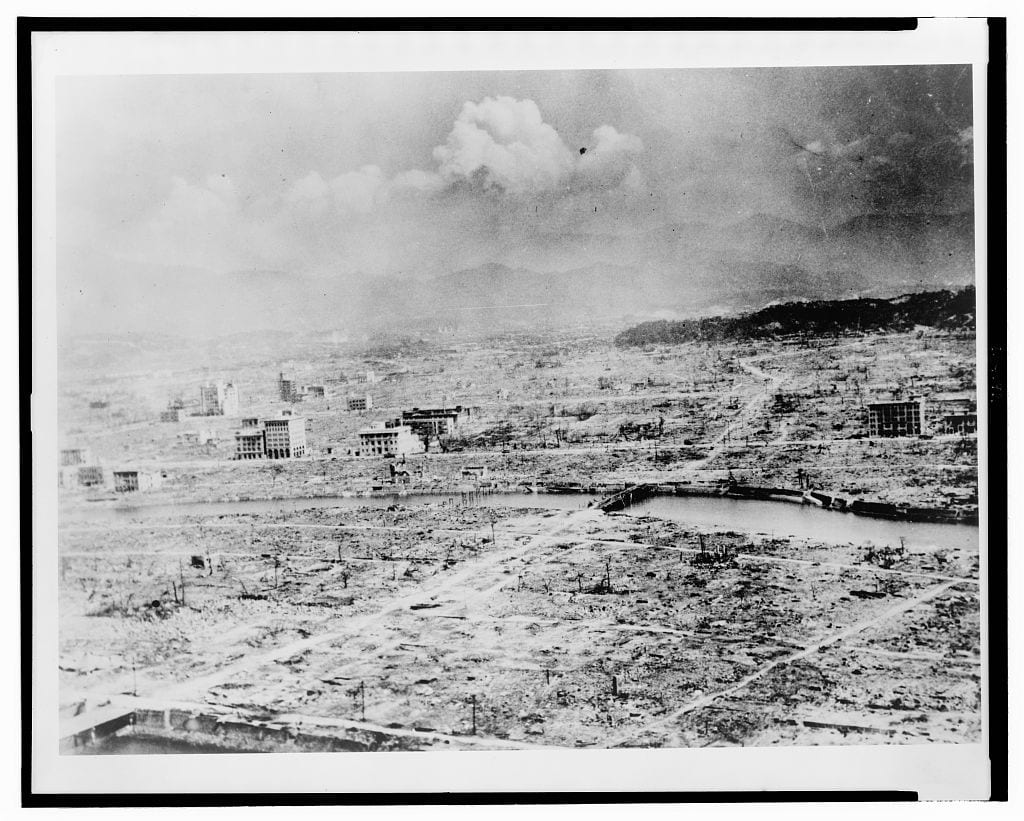
No study questions
No related resources
Ellison, Ralph. "An American Dilemma: A Review." In Shadow and Act, 303-317. New York: Random House, 1964.
Gunnar Myrdal’s An American Dilemma is not an easy book for an American Negro to review. Not because he might be overawed by its broad comprehensiveness; nor because of the sense of alienation and embarrassment that the book might arouse by reminding him that it is necessary in our democracy for a European scientist to affirm the American Negro’s humanity; not even because it is an implied criticism of his own Negro social scientists’ failure to define the problem as clearly. Instead, it is difficult because the book--as a study of a social ambiguity--is itself so nearly ambiguous that in order to appreciate it fully and yet protect his own humanity, the Negro must, while joining in the chorus of "Yeas" which the book has so deservedly evoked, utter a lusty and simultaneous "Nay."
In our society it is not unusual for a Negro to experience a sensation that he does not exist in the real world at all. He seems rather to exist in the nightmarish fantasy of the white American mind as a phantom that the white mind seeks unceasingly, by means both crude and subtle, to lay. Myrdal proves this no idle Negro fancy. He locates the Negro problem "in the heart of the [white] American . . . the conflict between his moral valuations on various levels of consciousness and generality." Indeed, the main virtue of An American Dilemma lies in its demonstration of how the mechanism of prejudice operates to disguise the moral conflict in the minds of whites produced by the clash on the social level between the American Creed and anti-Negro practices. There is, however, a danger in this very virtue.
For the solution of the problem of the American Negro and democracy lies only partially in the white man’s free will. Its full solution will lie in the creation of a democracy in which the Negro will be free to define himself for what he is and, within the large framework of that democracy, for what he desires to be. Let this not be misunderstood. For one is apt, in welcoming An American Dilemma's democratic contribution, to forget that all great democratic documents--and there is a certain greatness here--contain a strong charge of anti-democratic elements. Perhaps the wisest attitude for democrats is not to deplore the ambiguous element of democratic writings but to seek to understand them. For it is by making use of the positive contributions of such documents and rejecting their negative elements that democracy can be kept dynamic.
Since its inception, American social science has been closely bound with American Negro destiny. Even before the Civil War the Southern ruling class had inspired a pseudo-scientific literature attempting to prove the Negro inhuman and thus beyond any moral objections to human slavery. Sociology did not become closely concerned with the Negro, however, until after Emancipation gave the slaves the status--on paper at least--of nominal citizens. And if the end of the slave system created for this science the pragmatic problem of adjusting our society to include the new citizens, the compromise between the Northern and Southern ruling classes created the moral problem which Myrdal terms the American Dilemma.
This was a period, the 1870s, wherein scientific method, with its supposed objectivity and neutrality to values, was thought to be the answer to all problems. There is no better example of the confusion and opportunism springing from this false assumption than the relation of American social science to the Negro problem. And let us make no easy distinctions here between Northern and Southern social scientists; both groups used their graphs, charts and other paraphernalia to prove the Negro’s biological, psychological, intellectual and moral inferiority; one group to justify the South’s exploitation of Negroes and the other to justify the North’s refusal to do anything basic about it.
Here was a science whose role, beneath its illusionary non-concern with values, was to reconcile the practical morality of American capitalism with the ideal morality of the American Creed.
Now, the task of reconciling moralities is usually the function of religion and philosophy, of art and psychoanalysis--all of which find myth-making indispensable. And in this, American sociological literature rivals all three: its mythmaking consisting of its "scientific" justification of anti-democratic and unscientific racial attitudes and practices. If Myrdal has done nothing else, he has used his science to discredit all of the vicious non-scientific nonsense that has cluttered our sociological literature. He has, in short, shorn it of its mythology.
It is rewarding to trace the connection between social science and the Negro a bit further. Usually when the condition of Negroes is discussed we get a Morality Play explanation in which the North is given the role of Good and the South that of Evil. This oversimplifies a complex matter. For at the end of the Civil War, the North lost interest in the Negro. The conditions for the growth of industrial capitalism had been won and the Negro "stood in the way of a return to national solidarity and a development of trade relations" between the North and the South. This problem was not easy to solve. Groups of Negroes had discovered the effectiveness of protest and what Myrdal shows to be the Negro’s strongest weapon in pressing his claims: his hold upon the moral consciousness of Northern whites.
In order to deal with this problem the North did four things: it promoted Negro education in the South; it controlled his economic and political destiny, or allowed the South to do so; it built Booker T. Washington into a national spokesman of Negroes with Tuskegee Institute as his seat of power; and it organized social science as an instrumentality to sanction its methods.
It might be said that this explanation sounds too cynical, that much of the North’s interest in Negro education grew out of a philanthropic impulse, and that it ignores the real contribution to the understanding of Negroes made by social science. But philanthropy on the psychological level is often guilt-motivated--even when most unconscious. And here, again, we have the moral conflict. When we look at the connection between Tuskegee and our most influential school of sociology, the Universtiy of Chicago, we are inclined to see more than an unconscious connection between economic interests and philanthropy, Negroes and social science.
But if on the black side of the color line Washington’s "Tuskegee Machine" served to deflect Negro energy away from direct political action, on the white side of the line the moral problem nevertheless remained. It does not, therefore, seem quite accidental that the man responsible for inflating Tuskegee into a national symbol, and who is sometimes spoken of as the "power behind Washington’s throne," was none other than Dr. Robert E. Park, co-founder of the University of Chicago School of Sociology.
The positive contributions of Dr. Park and those men connected with him are well established. American Negroes have benefited greatly from their research; and some of the most brilliant of Negro scholars have been connected with them. Perhaps the most just charge to be made against them is that of timidity. They have been, in the negative sense, victims of the imposed limitations of bourgeois science. Because certainly their recent works have moved closer and closer toward the conclusions made by Myrdal. Indeed, without their active participation, An American Dilemma would have been far less effective. Nevertheless, it was Myrdal who made the most of their findings. Perhaps it took the rise of fascism to free American social science of its timidity. Certainly it was necessary to clear it of some of the anti-Negro assumptions with which it started.
Dr. Robert E. Park was both a greater scientist and, in his attitude toward Negroes, a greater democrat than William Graham Sumner. (It will perhaps pain many to see these names in juxtaposition.) In our world, however, extremes quickly meet. Sumner believed it "the greatest folly of which man can be capable to sit down with a slate and pencil and plan out a new social world"; a point of view containing little hope for the underdog. But for all his good works, some of Park’s assumptions were little better. The Negro, he felt "has always been interested rather in expression than in action; interested in life itself rather than in its reconstruction or reformation. The Negro is, by natural disposition, neither an intellectual nor an idealist, like the Jew; nor a brooding introspective, like the East Indian; nor a pioneer and frontiersman, like the Anglo-Saxon. He is primarily an artist, loving life for its own sake. His métier is expression rather than action. He is, so to speak, the lady among the races."
Park’s descriptive metaphor is so pregnant with mixed motives as to birth a thousand compromises and indecisions. Imagine the effect such teachings have had upon Negro students alone! Thus what started as part of a democratic attitude, ends not only uncomfortably close to the preachings of Sumner, but to those of Dr. Goebbels as well.
One becomes impatient with those critics who accuse American capitalism of neglecting social planning. Actually its planning lay in having the loosest plan possible. And when it was economically expedient to change plans it has been able to do so. During the Abolitionist period the moral nature of the Negro problem was generally recognized. But with the passing of the Reconstruction the moral aspect was forced out of consciousness. Significantly, Booker T. Washington wrote a biography in which he deliberately gave the coup de grâce to the memory of Frederick Douglass, the Negro leader who, in his aggressive career, united the moral and political factions for the anti-slavery struggle.
Following World War I, under the war-stimulated revival of democracy, there was a brief moment when the moral nature of the problem threatened to come alive in the minds of white Americans. This time it was rationalized by projecting into popular fiction the stereotype of the Negro as an exotic primitive; while social science, under the pressure of war production needs, was devoted to proving that Negroes were not so inferior as a few decades before. It was during this period that some of the most scientifically valid concepts for understanding the Negro were advanced. But social science did not have the courage of its own research. Following its vital Jamesian influence it began to discover the questionable values it supported and, until Myrdal arrived, timidly held its breath.
Why, then, should Myrdal be brought into the country in 1937 by the Carnegie Foundation to prepare this study and not before? Why this sudden junking of ideological fixtures?
According to F. P. Keppel, who writes the Foreword for the trustees of the Carnegie Corporation: "The underlying purpose of these studies is to contribute to the general advancement and diffusion of knowledge and understanding." There was, Mr. Keppel admits, another reason, namely, "the need of the foundation itself for fuller light in the formulation and development of its own program." Former Secretary of War, Newton D. Baker, target of much Negro discontent over the treatment of Negro soldiers during the last war, suggested the study; and the board agreed with him that "more knowledge and better organized and interrelated knowledge [of the Negro problem] were essential before the Corporation could intelligently distribute its own funds." And that "the gathering and digestion of the material might well have a usefulness far beyond our own needs."
These, we must admit, are all good reasons, although a bit vague. One thing, however, is clear: a need was felt for a new ideological approach to the Negro problem. This need was general, and if we look for a moment at those two groups--the left-wing parties and the New Deal--that showed the greatest concern with the Negro problem during the period between the Depression and the outbreak of the war, we are able to see how the need expressed itself.
Both the Left and the New Deal showed a far less restrained approach to the Negro than any groups since the Abolitionists. The Left brought the world-view of Marxism into the Negro community, introduced new techniques of organization and struggle, and included the Negro in its program on a basis of equality. Within its far more rigid framework the New Deal moved in the same democratic direction. Nevertheless, for all their activity, both groups neglected sharp ideological planning where the Negro was concerned. Both, it might be said, went about solving the Negro problem without defining the nature of the problem beyond its economic and narrowly political aspects. Which is not unusual for politicians--only here both groups consistently professed and demonstrated far more social vision than the average political party.
The most striking example of this failure is to be seen in the New Deal Administration’s perpetuation of a Jim Crow Army, and the shamefaced support of it given by the Communists. It would be easy--on the basis of some of the slogans attributed to Negro people by the Communists, from time to time, and the New Deal’s frequent retreats on Negro issues--to question the sincerity of these two groups. Or, in the case of the New Deal, attribute its failure to its desire to hold power in a concrete political situation; while the failure of the Communists could be laid to "Red perfidy." But this would be silly. Sincerity is not a quality that one expects of political parties, not even revolutionary ones. To question their sincerity makes room for the old idea of paternalism, and the corny notion that these groups have an obligation to "do something for the Negro."
The only sincerity to be expected of political parties is that flexible variety whereby they are enabled to put their own programs into effect. Regardless of their long-range intentions, on the practical level they are guided not by humanism so much as by expediencies of power. Thus if there is any insincerity here, it lies in the failure of these groups to make the best of their own interests by basing their alliances with Negroes upon a more scientific knowledge of the subtleties of Negro-White relations.
Dismissing the New Deal point of view as the eclectic creation of a capitalism in momentary retreat, what was influencing the Communists who emphasized the unity of theory and practice? This, we believe, sprang from their inheritance of the American Dilemma (which, incidentally disproves the red-baiters’ charge that left-wingers are alien). Despite its projection of a morality based upon Marxist internationalism, it had inherited the moral problem centering upon the Negro which Myrdal finds in the very tissue of American thinking. And while we disagree with Myrdal’s assumption that the psychological barrier between black and white workers is relatively rigid--their co-operation in unions and war plants disproves this--he has done the Left a service in pointing out that there is a psychological problem which, in this country, requires special attention.
For in our culture the problem of the irrational, that blind spot in our knowledge of society where Marx cries out for Freud and Freud for Marx, but where approaching, both grow wary and shout insults lest they actually meet, has taken the form of the Negro problem.
In Europe it was the fascists who made the manipulation of myth and symbol a vital part of their political technology. But here at home, as we have shown, it was only the Southern ruling class that showed a similar skill for psychology and ideological manipulation. By contrast, the planning of the Northern ruling groups in relation to the South and the Negro has always presented itself as non-planning and philanthropy on the surface, and as sociological theory underneath. Until the Depression the industrial and social isolationism of the South was felt to offer the broadest possibility for business exploitation. But attempts at national economic recovery proved this idea outdated; Northern capital could no longer turn its head while the Southern ruling group went its regressive way. Hence the New Deal’s assault upon the ignorance and backwardness of the Southern "one-third of a nation." There was a vague recognition that the necessity of the economic base of American capitalism had become dislocated from its ideological superstructure. However, the nation, so technologically advanced and scientifically alert, showed itself amazingly backward in creating or borrowing techniques to bring these two aspects of social reality into focus. Not that the nature of the problem was not understood. Writers ranging from Earl Browder, through Max Lerner, to the New Deal Braintrusters had a lot to say about it. And Lerner especially emphasized the technological and psychological nature of the problem, stressed the neutrality of techniques and suggested learning even from the Nazi, if necessary. But for the most part, both New Deal and the official Left concentrated more upon the economic aspects of the problem--important though they were--than upon those points where economic and psychological pressures conflicted.
There is a certain ironic fittingness about the fact that these volumes, prepared with the streamlined thoroughness of a Fortune Magazine survey, and offering the most detailed documentation of the American Negro’s humanity yet to appear, should come sponsored by a leading capitalist group. I say this grudgingly, for here the profit motive of the Right--clothed it is true in the guilt-dress of philanthropy--has proven more resourceful, imaginative and aware of its own best interests than the overcautious socialism of the Left. Not that we expect the Left to have resource to the funds--some $300,000--that went into the preparation of this elaborate study. But that it has failed even to state the problem in such broadly human terms, or with that cultural sophistication and social insight springing from Marxist theory, which, backed by passion and courage, has allowed the Left in other countries to deal more creatively with reality than the Right, and to overcome the Right’s advantages of institutionalized power and erudition.
The reviewers have made much of Dr. Myrdal’s being a foreigner, imported to do the study as one who had no emotional stake in the American Dilemma. And while this had undoubtedly aided his objectivity, the extent of it is apt to be overplayed.
The whole setting is dramatic. A young scholar-scientist of international reputation, a banker, economic adviser to the Swedish Government and a member of the Swedish Senate, is invited by one of the wealthiest groups in the United States to come in and publicly air its soiled democratic linen. Bearing this set of circumstances in mind while we consider the writing problem faced by Myrdal, we can see how the various social and economic factors which we have discussed come to bear upon his book.
First, Myrdal had to delve into those areas of the American mind most charged with emotion; he had to question his hosts’ motivation and present his findings in such a way that his hosts would not be too offended. He had also to tell the South some unpleasant things about itself; he had to present facts unacceptable to certain reactionary sections of the capitalist class; and, in the words of Mr. Keppel, he had, "since the emotional factor affects Negroes no less than whites," to present his material in such a manner as not to "lessen the confidence of the Negroes in the United States."
And when we consider the great ideological struggle raging since the Depression, between the Left and the Right, we see an even further problem for the author: a problem of style--which fades over into a problem of interpretation. It also points to the real motivation for the work: An American Dilemma is the blueprint for a more effective exploitation of the South’s natural, industrial and human resources. We use the term "exploitation" in both the positive and negative sense. In the positive sense it is the key to a more democratic and fruitful usage of the South’s natural and human resources; and in the negative, it is the plan for a more efficient and subtle manipulation of black and white relations--especially in the South.
In interpreting the results of this five-year study, Myrdal found it confirming many of the social and economic assumptions of the Left, and throughout the book he has felt it necessary to carry on a running battle with Marxism. Especially irritating to him has been the concept of class struggle and the economic motivation of anti-Negro prejudice which to an increasing number of Negro intellectuals correctly analyzes their situation:
As we look upon the problem of dynamic social causation, this approach is unrealistic and narrow. We do not, of course, deny that the conditions under which Negroes are allowed to earn a living are tremendously important for their welfare. But these conditions are closely interrelated to all other conditions of Negro life. When studying the variegated causes of discrimination in the labor market, it is, indeed, difficult to perceive what precisely is meant by "the economic factor. . . ." In an interdependent system of dynamic causation there is no "primary cause" but everything is cause to everything else.
To which one might answer "only if you throw out the class struggle." All this, of course, avoids the question of power and the question of who manipulates that power. Which to us seems more of a stylistic maneuver than a scientific judgment.
For those concepts Myrdal substitutes what he terms a "cumulative principle" or "vicious circle." And like Ezekiel’s wheels in the Negro spiritual, one of which ran "by faith" and the other "by the grace of God," this vicious circle has no earthly prime mover. It "just turns."
L. D. Reddick has pointed out that Myrdal tends to use history simply as background and not as a functioning force in current society. And we see this as one with Myrdal’s refusal to locate the American ethos in terms of its material manifestations, or to point out how it is manipulated--although he makes it the basis of his stylistic appeal. It is unlikely in this mechanist-minded culture that such a powerful force would go "unused."
Myrdal’s stylistic method is admirable. In presenting his findings he uses the American ethos brilliantly to disarm all American social groupings, by appealing to their stake in the American Creed, and to locate the psychological barriers between them. But he also uses it to deny the existence of an American class struggle, and with facile economy it allows him to avoid admitting that actually there exist two American moralities, kept in balance by social science.
The limitations of Myrdal’s vision of American democracy do not lie vague and misty beyond the horizon of history. They can be easily discerned through the Negro perspective.
Myrdal’s study of the Negro is, in comparison with others, microscopic. Here, to name only a few aspects, we find analyses of Negro institutions, class groupings, family organization, economic problems, race theories and prejudices, the Negro press, church and leadership. Some of the insights are brilliant, especially those through which he demonstrated how many Negro personality traits, said to be "innate," are socially conditioned--even to types of Negro laughter and vocal intonation. But with all this he can only conclude that "the Negro’s entire life and, consequently, also his opinions on the Negro problem are, in the main, to be considered as secondary reactions to more primary pressures from the side of the dominant white majority."
But can a people (its faith in an idealized American Creed notwithstanding) live and develop for over three hundred years simply by reacting? Are American Negroes simply the creation of white men, or have they at least helped to create themselves out of what they found around them? Men have made a way of life in caves and upon cliffs, why cannot Negroes have made a life upon the horns of the white man’s dilemma?
Myrdal sees Negro culture and personality simply as the product of a "social pathology." Thus he assumes that "it is to the advantage of American Negroes as individuals and as a group to become assimilated into American culture, to acquire the traits held in esteem by the dominant white Americans." This, he admits, contains the value premise that "here in America, American culture is ’highest’ in the pragmatic sense. . . ." Which aside from implying that Negro culture is not also American, assumes that Negroes should desire nothing better than what whites consider highest. But in the "pragmatic sense" lynching and Hollywood, fadism and radio advertising are products of the "higher" culture, and the Negro might ask, "Why, if my culture is pathological, must I exchange it for these?"
It does not occur to Myrdal that many of the Negro cultural manifestations which he considers merely reflective might also embody a rejection of what he considers "higher values." There is a dualism at work here. It is only partially true that Negroes turn away from white patterns because they are refused participation. There is nothing like distance to create objectivity, and exclusion gives rise to counter values. Men, as Dostoievsky observed, cannot live in revolt. Nor can they live in a state of "reacting." It will take a deeper science than Myrdal’s--deep as that might be--to analyze what is happening among the masses of Negroes. Much of it is inarticulate, and Negro scholars have, for the most part, ignored it through clinging, as does Myrdal, to the sterile concept of "race."
Much of Negro culture might be negative, but there is also much of great value, of richness, which, because it has been secreted by living and has made their lives more meaningful, Negroes will not willingly disregard.
What is needed in our country is not an exchange of pathologies, but a change of the basis of society. This is a job which both Negroes and whites must perform together. In Negro culture there is much of value for America as a whole. What is needed are Negroes to take it and create of it "the uncreated consciousness of their race." In doing so they will do far more, they'll help create a more human American.
Certainly it would be unfair to expect Dr. Myrdal to see what Negro scholars and most American social scientists have failed to see. After all, like most of its predecessors An American Dilemma has a special social role. And while we do not quarrel with it on these grounds necessarily, let us see it clearly for what it is. Its positive contribution is certainly greater at this time than those negative elements--hence its uncritical reception. The time element is important. For this period of democratic resurgence created by the war, An American Dilemma justifies the desire of many groups to see a more democratic approach to the Negro. The military phase of the war will not, however, last forever. It is then that this study might be used for less democratic purposes. Fortunately its facts are to an extent neutral. This is a cue for liberal intellectuals to get busy to see that An American Dilemma does not become an instrument of an American tragedy.
Do You Want Your Wife to Work After the War?
December 31, 1944
Conversation-based seminars for collegial PD, one-day and multi-day seminars, graduate credit seminars (MA degree), online and in-person.







